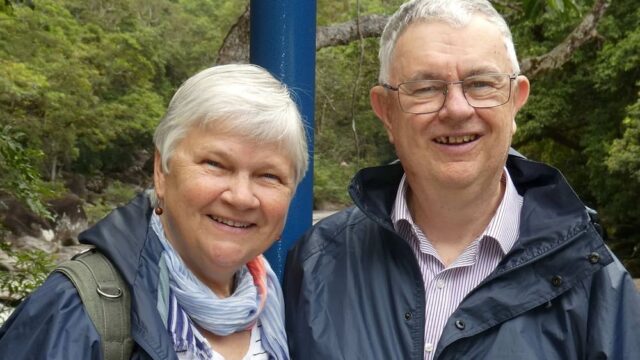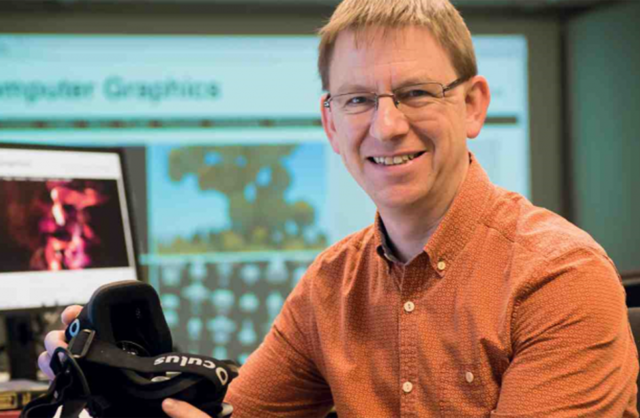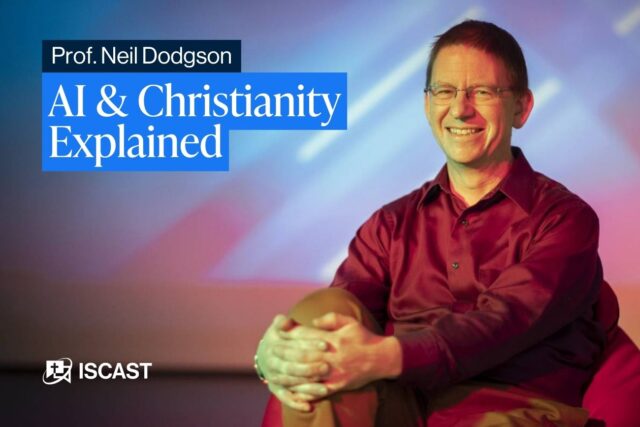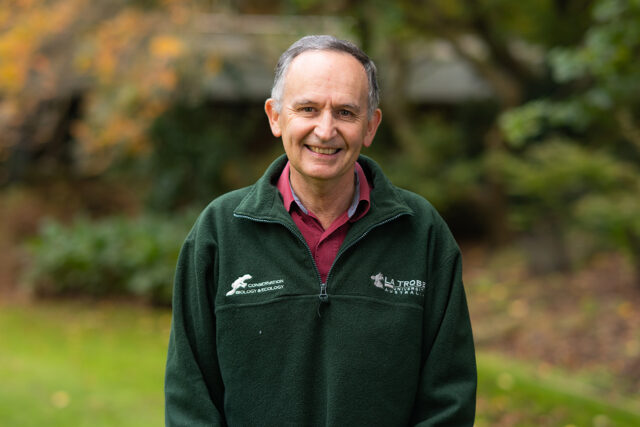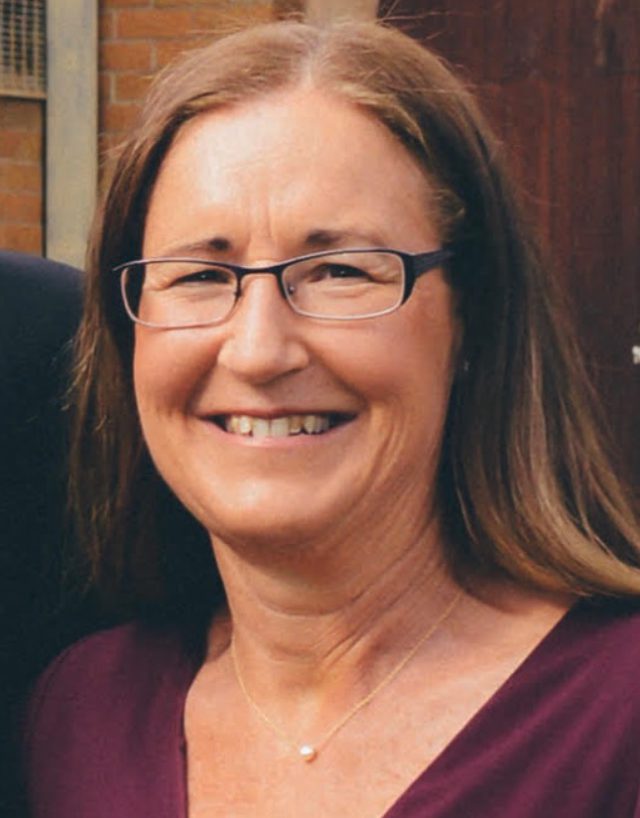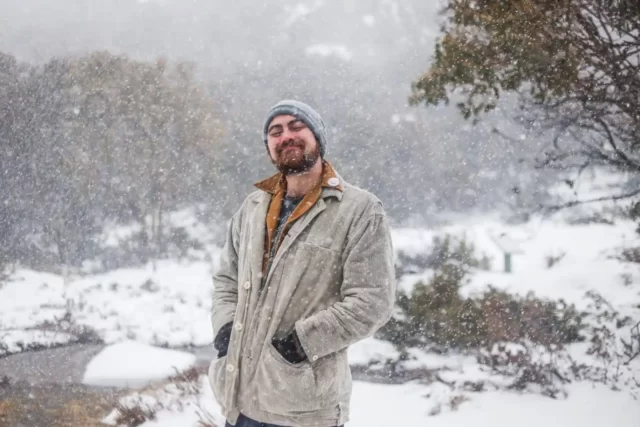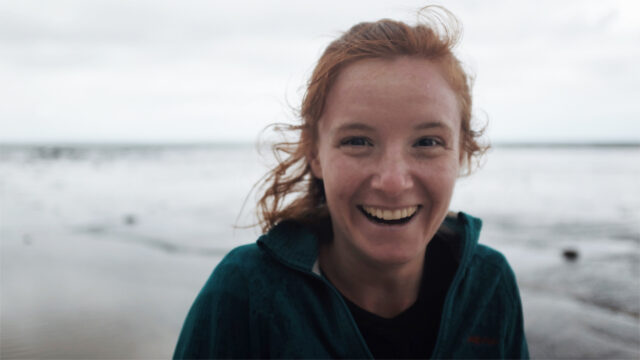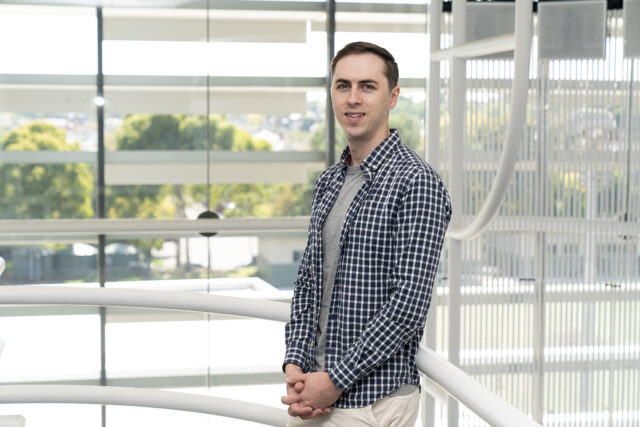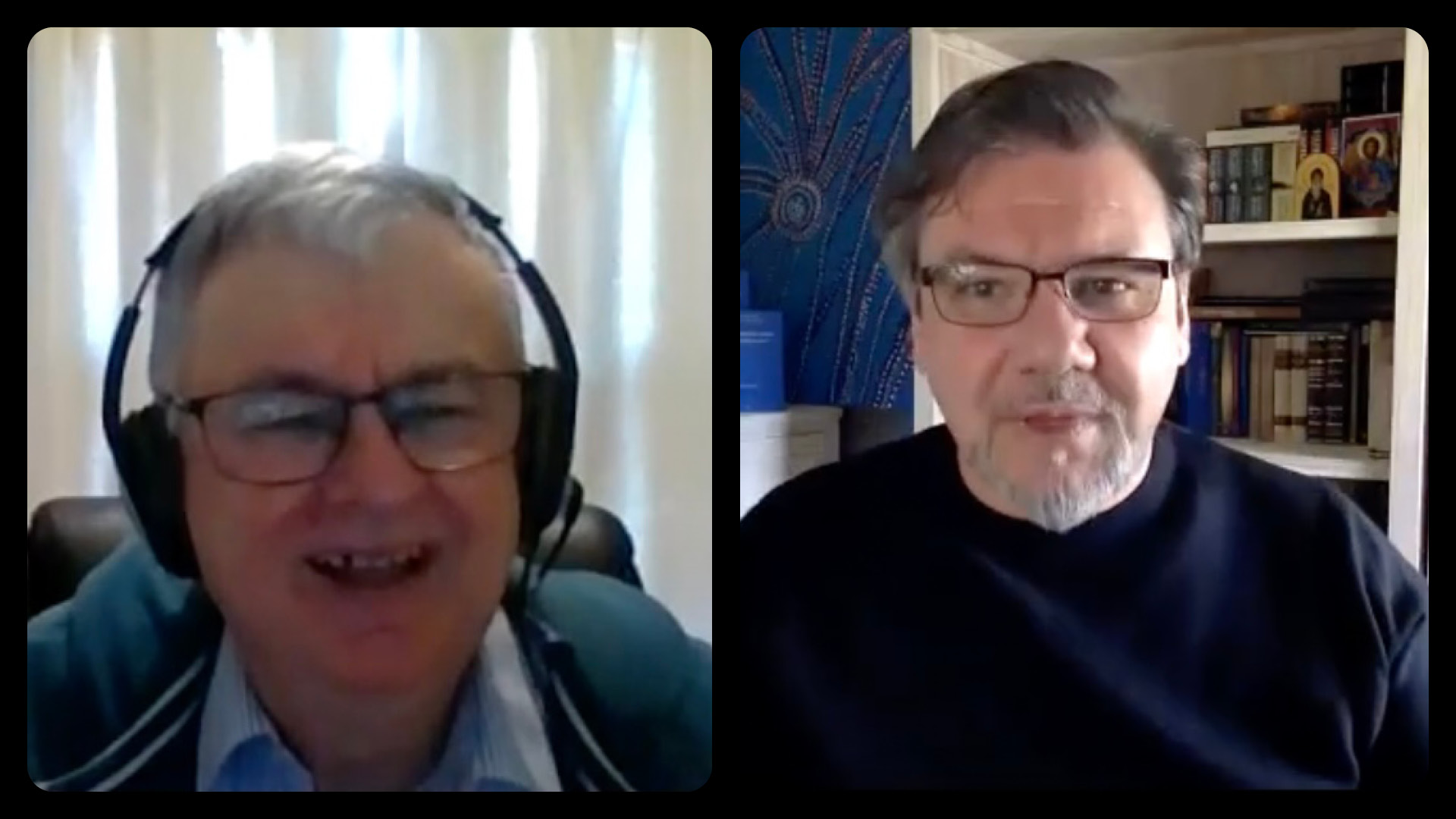
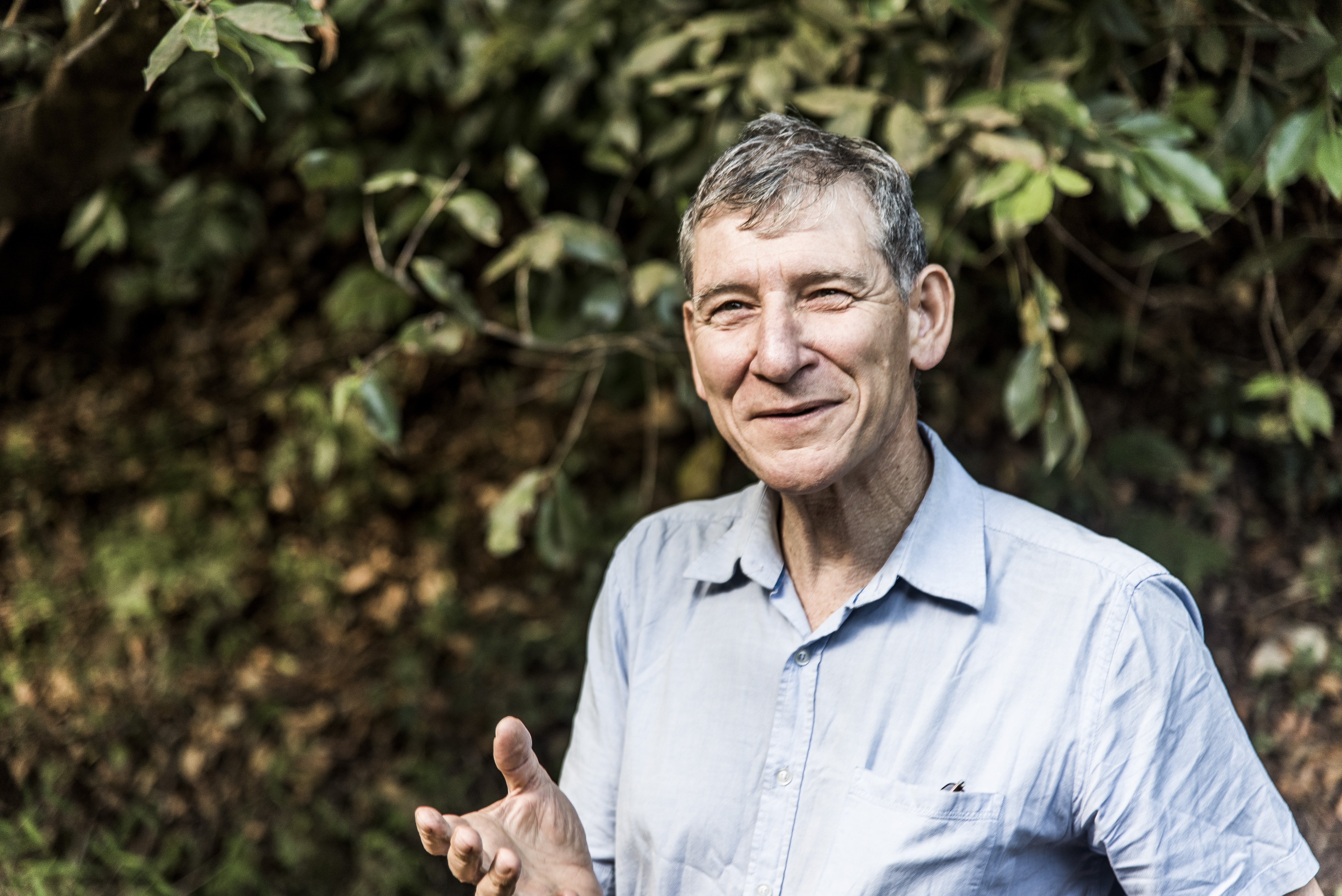

This is the extraordinary story of Sub-Saharan Niger, one of the world’s poorest countries, and the reforestation of an area the size of Tasmania through Farmer Managed Natural Revegetation (FMNR).
Behind this good news story is a quiet-spoken Melbournian—agriculturalist, humanitarian, development expert—who has just won the ‘alternative Nobel Prize’ as well as being made a Member of the Order of Australia. Tony Rinaudo is seeing his life’s work come to fruition as the movement he started decades ago continues to gather momentum.
This is the full interview in which Tony, now principal natural resources advisor at World Vision, talked of theology and agriculture, the challenges of cross-cultural development, the sins of an affluent West, and of angrily wrestling with God in prayer. An edited extract of this interview was published in The Melbourne Anglican in March 2019.
ISCAST Executive Director Chris Mulherin, who knew Tony and his wife Liz before they went to Niger, conducted the interview on February 4, 2019
To listen to the full audio of the interview, click here
To download a pdf transcript of the interview, click here
Tony’s biography, The Forest Underground: Hope for a Planet in Crisis, has been published by ISCAST (April 2022).
Chris Mulherin: Tony why don’t you tell us who you are … you start the ball rolling by just telling us who you are and then I will have lots to talk about.
Tony Rinaudo: Thanks Chris. Tony Rinaudo, I work at World Vision, I’m the principle natural resources advisor. And married to Liz Rinaudo, we have four children who grew up in Africa, we were missionaries with Serving in Mission (SIM). And both of us have an agricultural background and we used that in the field and continue to use it in my work in World Vision but on a much bigger scale.
So you first went to Africa in …?
1981 with SIM to Niger Republic.
Stumbling beginnings
Now we have a bit of a personal contact back there don’t we? Because I remember you at Deepdene Uniting Church as the first missionaries that I really came across, and of course I knew Liz in the youth group—she was a bit older than me—but in the youth group at Deepdene, so you were quite influential in our lives too. So you went to Niger, and you went to Niger to do what? What did you think you were going there to do?
So I was in charge of a preparatory Bible college which was placed on a property which was a farm school. So the idea was to … well prepare students to go into Bible college—because a lot of them came illiterate—but the original purpose was with the view to them becoming farmer evangelists. And so I was also managing the property and I was in charge of the Maradi—Maradi is the city and the district that we lived in—the Maradi Windbreak and Woodlot project.That’s what I went out to do.
I don’t know how well I managed the property or the Bible college or the project for that matter, and it was very frustrating because the tree project idea just didn’t work. Most trees that we planted just died, the people weren’t interested and they called me the “mad white farmer” for even wanting to think of such an idea, because in their minds they were hungry, they were poor, and trees competed with the crops they were trying to grow—in their thinking—and so why should they listen to me? So it was very very frustrating.
So, in the short term for them it was a matter of cutting down the trees but in the long term that was damaging the ecology and, this is sub-Saharan Africa is it?
2:51 [corresponding times in audio file, shown in minutes and seconds]
Extremely so. At the time when I was growing up in Australia that district in Niger would have been biodiverse dryland forest, and over time as population grew and people’s need for farming land increased, they cleared the trees and by the time we arrived in 1981 it was a moonscape. Average tree density was about four trees per hectare but many hectares had zero trees and it was not only an ecological disaster. The desert in a sense—while I don’t have a picture of it marching down from the Sahara—in a sense it was happening wherever this land degradation and deforestation was happening, so ecological disaster. But also a livelihoods disaster because the land, the natural resource base that we grow our food and cash crops on, could no longer provide for the people that were farming it, as a consequence of that deforestation.
Now if we fast-forward—how many years is it? It’s almost 40 years; it’s 30-something years—you’ve hit the world stage in quite a significant way just in the last six months, haven’t you? How did that come about?
Well, what happened in Niger has been described by a Dutch geographer as possibly the largest single environmental change in West Africa if not all of Africa. Meaning that the reforestation that has happened since that time is probably the largest single positive environmental change in all of Africa. So [the award] is for that work.
An answer to a desperate prayer
And what we did was we realised the tree planting idea wasn’t going to have any impact whatsoever: it was expensive, it was a failure in terms of survival rate, the people weren’t interested. And what came about really is an answer to a very frustrated prayer. God revealed that actually everything that we need is already there. While the trees had been cut down they weren’t dead. And the stumps, sometimes just pieces of living root and often the seed stock, the seed bank in the soil the remnant seeds; they were there and all that was required was a change in behaviour. And the rest was history.
So over a period of 20 years reforestation progressed at a rate of a quarter of a million hectares per year. Average tree density increased from four trees per hectare to over 40. And that equates to about 200 million trees that, while they were there before, they weren’t visible. I call it my underground forest; they had to be released.
5:47
Now I have read somewhere that this sort of dawned on you when you stopped by the side of the road to fix a tyre or something like that. Is that apocryphal or true?
That‘s pretty accurate. So, the soil is very sandy and you need to release pressure from the tires to navigate it without getting bogged, and I had a load of trees on and it was just one of those frustrating days when I was ready to give up. And I was a little bit angry with God—I’m not sure if you should be angry with God but I was—“why did you bring me out here? You could have just as easily made a fool of me in Australia you didn’t have to bring me all this way.”
Because we had tried everything, we poured our heart into this, we experimented, we read widely, we consulted others. Nothing worked in a sustainable, practical way and yet despite that frustration I knew. God doesn’t call you out just to humiliate you or for you to fail: there must have been a reason, and I prayed in a sense a strange prayer—a little bit like Nehemiah’s—but in another sense perfectly normal. I asked God to forgive us. Because while I hadn’t taken part in the destruction in the Sahara, in our affluent Western lifestyle we had played our own part in contributing to climate change, to pollution and biodiversity loss, “so please forgive us for the destruction of the gift of your creation and as a consequence of that, people are suffering: they’re poor, they’re often hungry and they don’t know what to do.”
“Eyes wide open but totally blind”
And I asked God “open our eyes, show us what to do; help us.” And it was about that time, I don’t remember if it was the same day that I prayed that frustrated prayer—I think it was—but it was about that time. Now remember I had been on this track for nearly two and a half years by this stage—nearly every week I would visit the villages, eyes wide open but totally blind to what I have called the underground forest. So you know, charging ahead I’ve got my trees on the back of the car; “ I’m going to do this thing.” Very much in my own strength and wisdom—“open our eyes and show us what to do”—and for the first time after praying that prayer I saw what had been there all along.
Across the landscape in the dry season when the crops aren’t growing, you can see all these little patches of green; they look like a desert bush or you might discount them as just a useless weed, something you would stomp on or just walk straight past and not give a second thought to. This day they caught my attention and I bothered to walk over from where I was letting the air pressure out to have a closer look. I knew my native trees by this stage and immediately when you see the distinctive shape of the leaf I knew: “that’s not a bush that’s a such and such a tree”, the native name is Kaligo Philostigma Reticulata. “That’s not a bush”. There were a few of these left in the landscape and I knew immediately what it was and in that instant everything changed.
The desert is not the enemy
It was no longer a question of my budget and my time frame and the number of staff I had. I was not fighting the Sahara Desert. It was a question of people’s beliefs about trees, their negative attitudes and their destructive practices. And if I could convince them that it was in their best interest to allow some of these tree stumps to grow into full-sized trees, the rest would be very easy because nature will heal itself if you allow it. Yeah, you’re right, it was that frustration and looking out over a barren landscape in every direction and then asking, “What to do? What did you bring me out here for? Give me a break!”
9:44
We will come back to what you did next. But before we do that, you went out as missionaries, you went out as agriculturalists. Why does your faith lead you to go out to Africa to plant trees?
Well I feel God has gifted me in this area, and it was a personal calling from when I was very little—it was an answer to prayer actually. So I grew up in the beautiful Ovens Valley, and when I was little I was just so disturbed by the environmental destruction happening in my own area: bulldozing the hills and leaving them fallow for long periods. I didn’t understand ecology but anybody could see that wasn’t good for biodiversity, erosion, all these different things, and that really upset me.
A fair bit of saw milling up there?
Oh yes. So it was pine plantations that were going in, and I’m not against pines but the way the land was being abused, the way it was being implemented seemed very short sighted and as bad as that was, the attitude that this was normal. Abuse of the environment was accepted as the normal cost of progress. So I don’t know where all this came from in me; there are no environmentalists in my family but these things disturbed me. The second thing was that I would watch the news and read whenever I could about world events and there were children just like me, who through no fault of their own were born somewhere else and they were going to bed hungry; and in my valley we were growing tobacco. And I just said “That doesn’t add up, that doesn’t make sense”.
Is this a Christian family you grew up in?
Yes, yes. So a Catholic family but very devout.
So there were certain values there that fed into your thinking.
Yes. So I felt powerless to do anything about either the environmental destruction or the poverty elsewhere but I prayed and I asked God “please use me somehow, somewhere to make a difference.” Even going to university and studying agriculture and then it was sort of confirmed in a way, because that’s where I met Liz, and she was also studying agriculture and had a sense of calling to be a missionary. Those things were steps along the way to, I believe, fulfilling that prayer and answering that prayer. So it’s a sense of calling, a sense of gratitude—God’s given us so much and ‘what have you done for the least of these my brethren’ sort of kicks in there too.
So back to Africa. It dawned on you that the underground forest was there and you changed your tack in terms of doing something about this problem. What did you do?
12:46
So we were working at that time in about 12 villages and I visited these villages and asked for a volunteer; somebody who would implement this on a small corner of their land. And in retrospect they were either the village idiots for listening to me because they really copped a lot; they were laughed at and ridiculed: “You crazy dirty farmer, don’t you know that if you have trees on your land you won’t have a crop” which was everything to them, they always lived on the edge of hunger. So they were either the village idiots or they were very visionary and they could see something in this.
And so we persevered with them in 1983 and it was looking really good, but the taller those trees grew the greater the opposition was—remembering this is a very traditional society. And if we think in Australia we have a tall poppy syndrome it’s nothing compared to what happens out there because the way communities survive was to stick together and to conform. Any oddity, any moving away from the norm was greatly discouraged. So these guys were ridiculed. At night time their trees were cut down, sometimes out of need, sometimes out of this fear, being different to what the ancestors set for us to do, and sometimes, I think there’s lots of hillbilly type of vendettas. You know, “my uncle never paid for that donkey and they got me back” sort of thing.
So a lot of that stuff went on and it would have failed even though I had these 10 or 12 guys doing it, it would have failed in 1983, but as it turned out in 1984 there was a catastrophic drought, and an almost total crop failure which followed several bad years. And what that means is, when you’re living on the edge, people had no reserves. So they were terribly desperate for food and it’s quite another different story, but how we were able to get a food-for-work program mounted and getting permission in a Muslim country is another story. But eventually we were able to mount a food-for-work program in those 12 villages, but it grew to 100 over that year: 1984. Fortunately the government of the time said if you are going to give out food aid then people have to work for it if they are able bodied, and this was wonderful.
15:16
Because you wanted them to work on this project.
And I had a captive audience. Now that’s not a good development model, but heck, you need a break sometimes.
You just take it as it comes!
Yes and we knew, we had enough evidence from 1983 with the trees, we knew this would work. So I had a captive audience in 100 villages and things were going along fine while I had the food to give. Every month we would count the trees. If they had 40 trees on their hectare of land they would get their allotment of food. Then the next harvest came in, in September or October—great harvest—and people said “finished with Tony and his silly trees.” And about 75% of the half-a-million odd trees got cut out again. “Now we will get on with our life thank you very much.” But 25% of the farmers who did this—and it could have been a core group of you know 2000–3000 farmers, which is good, it’s a critical mass—t was enough people that there was mutual support to resist the joking and the derision and all that comes with it. From that critical mass over the next 20 years it spread from farmer to farmer. We were certainly doing things but what happened without our knowledge was even far greater.
It went viral?
It went viral. It went organic. It was a people movement. I would think … as far as I can tell, I am not aware of any regreening movement without massive money injection. There was minimal money injection; it’s probably the biggest of its type anywhere in the world. I haven’t read of anything else like this.
And that figure I quoted you … it spread to 5 million hectares over a 20-year period without my knowledge. I knew what was happening in my district and we welcomed any visitor: Peace Corps group, NGO, faith-based group, a government foresters’ group. “Come, come and spend a day with our farmers.” And I took mostly my farmers, sometimes my staff, and I sent them to the four corners of Niger, wherever they were welcome.
“There are trees everywhere!”
In the next 10 or 15 years I never got any feedback. Did they laugh at it? Did it work? Did it fail? There was no response. I knew in my area it was having tremendous impact. In 2004—we left Niger in 1999—in 2004 I met a Dutch researcher and he gets his pen out and he says: “Tony this is amazing: I ‘ve just done a road-trip across Niger and I have been coming here for 30 years—there are trees everywhere!” He estimated 1 million hectares and later he worked with the US Geological Survey and they analysed their satellite images: it was 5 million hectares! He banged his pen down on the table and he said: “Enough research, this message has to get out to the world!”, and he has been the flying Dutchman, going to US congress and going to Dutch governments and donors, going to NGO’s sharing about this method that spread organically across Niger.
18:38
And it’s now known as FMNR. Is that right? What does that stand for?
Yes. Hard to say, easy to do. I mean I’m not responsible for that name. So, it stands for Farmer Managed Natural Regeneration, and as much as we have tried to find a more catchy phrase, a more marketable phrase, it actually is what it says and we haven’t come up with a better alternative. When we take it to a new country though, I actually give a small money prize ($10 or so) to anyone who can come up with—not a word-for-word translation—but for something that’s meaningful in the vernacular. Because it has to be owned by the people using it.
Now just to get those facts right because, you know, “millions of hectares” and all that sort of thing … One thing I have seen is, we have trees the area of Tasmania roughly that wouldn’t have been there if FMNR hadn’t got off the ground … Roughly?
Yes I believe so, five million hectares, I don’t have it in the top of my head but…
And 200 million trees or something like that.
Yes. Well, since that calculation was made, last year a new survey was done and it spread to six million hectares, so probably around 240 million trees in Niger.
Since 1999 I’ve been with World Vision and we have put in a big effort to spread this wherever World Vision works and with and through other partners who are taking it even beyond where we work. And so we’ve been able to introduce it into 24 countries. The trouble with this thing is, in terms of measurement, it’s an idea: I’m not planting an actual tree; I am giving you an idea and I have no control over where that idea goes. So, while we estimate perhaps in World Vision programs there is an additional one million hectares we have no idea of knowing. And my suspicion is—based on the Niger experience—it’s actually much greater than that.
20:50
So what? So you know if the crops are growing well—if there’s lots of food around, what are the benefits of this and what does it look like? I mean we’re not talking about dense forests are we? Just paint the picture a little bit more for us.
So what … This is very significant; initially take Niger as a case study and I will give you the context. We are on the edge of the Sahara Desert, so very harsh conditions. And a study was done in West Africa; when you account for the losses in tree planting, it costs about $18,000 per hectare of not-doing-very-well plantations. You can be sure that when the last dollar is spent the last tree goes into the ground. In comparison, effectively FMNR costs nothing because it is the farmers’ labour. Now projects cost something: roughly about 40 dollars per hectare but with a diminishing cost over time because it spreads and we estimate that in Niger the cost per hectare is about two dollars over time. It keeps spreading and it keeps getting less per hectare.
Compared to $18,000 if you just go in and plant trees—seedlings sort of things.
Yes, and then $18,000 extra for every new hectare you want to put in. Now, so, poorest country, edge of the Sahara Desert, harsh conditions and reforestation failing, no government support at the time—and I belong to a mission that didn’t have a big budget to do this with—they grow an additional 500,000 tonnes of grain per year because of the improved environmental microclimate where they are growing the crops.
So you’re not talking about just a tree here. This tree affects the land around it.
Yes. In amazing ways. The way God’s put Creation together is astounding. For example the very trees that we came across and practise FMNR on, they’re fertiliser trees—they put nitrogen in the soil—some of them are doing a thing called bio-irrigation: they draw water from deep in the soil through their tap root. At night they leak that water out into the shallow soil surface irrigating crops. And you can see photos where under the tree—it’s counter-intuitive—under the tree in a drought year, the crop isn’t just surviving it is thriving. You go three metres away from the trunk of the tree and there is hardly any green whatsoever. It’s bio-irrigating.
So the tree’s not extracting the water, making the ground dry, it is actually moistening the ground around it.
Unlike many of our eucalyptus species which do have some shallow roots which desiccate the soil.
Yes. Outside our place on the nature strip it is very dry…
Yes. These particular species—some of them—are bio-irrigating. Drawing water from deep and redistributing it within the zone of the roots of the crop.
They are providing habitats. So, we don’t need pesticides because God’s the farmers’ friend. God’s army if you like is in there: the lizards, the insect-eating birds, the spiders and so on, now have habitat. They won’t eliminate pests but they will bring in balance.
So crop yield has doubled in one of the hungriest and poorest countries in the world, and gross income—the value of what people consume and sell because of the trees—is in the order of up to $1000 per household and that equates to nearly $900 million, year after year after year;. without subsidy, without fertiliser, without irrigation, without any of these helps.
Just because they have allowed these trees to grow.
Allowed the trees to grow and working with nature, with God’s creation instead of fighting it and destroying it, and making it incapable of doing what it was designed to do. So I get very excited. So that’s a local example. On a world scale, if we can do this at scale—and the World Resources Institute estimates there are two billion hectares of degraded land globally; five hundred million of these are formerly farmlands, degraded farmlands, no longer in use. Imagine if we could do this on two billion hectares.
In Niger, average carbon sequestration rates—so drawing CO2 out of the atmosphere—is about one tonne per hectare per year. Now it’s not a great deal. But we are talking … If we did that on 500 million hectares, and the minimum is 500 million tonnes per year, it is starting to look interesting as a measure to mitigate climate change. It is not a silver bullet. Other things have to be done. But it can be a very big help at low cost and at speed. Now some of those 500 million hectares fall in better rainfall areas, better soil types, and our best project which is a forest—you asked if it’s just farmland—it’s forest restoration in Ethiopia; they’re sequestering 15 tonnes per hectare per year. So then it’s starting to look even more interesting for mitigation. The whole time … climate change is happening whether we like it or not and no matter what we do we are sort of locked in to a certain degree of suffering and damage no matter what. Having trees on land helps us to adapt.
For example, for every one degree increase in temperature above the optimum growing temperature for crops you will get 10 percent decrease in yield. Now some of these places are set to have up to five or even seven degree increase in temperature. They’re already not growing enough, and they are going to lose 50 to 70 percent yield. Having a light scattering of trees in your land can reduce air temperatures by up to 10 degrees and soil surface temperatures by [up to] 31 degrees Celsius. It is scorching out there in the middle of the day. Those high temperatures make it almost impossible to grow food or anything else for that matter. We can buy time by restoring vegetation on the land.
Can I just go back to that figure. Did you say that having trees compared to having a sort of parched landscape can change soil temperatures by 31 degrees?
27:30
In the Sahel at midday, soil surface temperatures get to 72 degrees Celsius. You can’t walk on that in bare feet. You could fry an egg on it. And people are trying to get their crops to germinate through that temperature. Any stress like that makes the plant more vulnerable to insect and disease attack and it wastes water—water is evaporating like crazy and so on—yes it reduces soil temperatures by up to 35 degrees.
Because if you’ve got trees around you can get the soil temperature down to 40 odd degrees or 30 odd degrees rather than 70 something?
Yes. It is very significant.
A theology of Creation
Now coming out of what we have seen, it sounds like you have a fairly strong sort of theology of Creation here don’t you. You move from climate change and very practical stuff to theological comments. Tell us about your theology of Creation.
We are given a responsibility to care for the garden, to care for Creation. In fact there is a little-quoted verse in Revelation that says “God will judge those who destroy the earth.” I think it is Revelation 11 or 18:11 or 11:18 something like that. “God will judge those who destroy the earth.” In Genesis, it’s just so beautiful. God put Adam and Eve in the garden to care for it and look after it. And I feel, okay we’re locked out of the Garden of Eden but Creation is still with us; it’s groaning for the revealing of the children of God. If we’re not the children of God, who are? And we have this responsibility for caring for Creation.
But also: “Who is my neighbour?”; a responsibility to care for our neighbours.
So it is a social justice issue as well?
Yes it ticks a lot of boxes. And that’s theological as well. “Who is my neighbour? I am my brother’s keeper.” My brother is suffering, often through ignorance, that they’ve destroyed God’s creation which can now no longer meet their needs. And so, using the gifts that God’s given me, the skills and gifts that God has given me to help people have a more biblical view of Creation—this is how God put it together. If we work within those parameters, it is going to provide for our needs. If we work against them there are going to be consequences. There are consequences which we are actually experiencing right now. And without putting it in biblical terms, for people I work with, that is what I am doing: this is how it’s put together, this is how we were meant to work with it, let’s give it a try.
30:32
So we need to work with the order of Creation even if you don’t put a capital ‘C’ on that and talk about God? We need to work with the ecological order rather than against it?
Yes. Fortunately, in many cultures—unlike our own—in many cultures it is okay to talk about God and how he put it together.
Yes. I wonder, going a bit broader afield but coming out of your reflections of having spent so much time overseas and also with a focus overseas, what would you like to say to Western, affluent, pretty comfortable people who mightn’t be quite so in-tune with the needs of the rest of the world or the state of the rest of the world? How do you see Western society?
Well, firstly, whether we are aware of it or not, we are our brother’s keeper and we have a responsibility as human beings; those who are Christians—as Christians, we have a responsibility to care for our neighbours.
Even for selfish reasons, if we don’t do this sort of activity, if we don’t help our neighbour, if we don’t restore God’s creation, there are very big consequences that will help us. Whatever your view on people getting in boats and coming to Western countries, there is an African proverb that says: “the thing that made the mouse jump out of the frying pan into the fire must have been hotter than the fire itself.” No matter what we do, walls, gunships whatever, people are going to come that can no longer feed their families where they come from, and you can help people to have a dignified living by restoring the environment. So, there is a selfish aspect I guess in doing it. But primarily as human beings, surely, how can we be satisfied with our affluent life and enjoying all these lovely things when there are human beings just like us who for no fault of their own were born elsewhere and don’t even have a chance?
So it is great to be doing these things and it is great to see some changes but some people are pretty pessimistic about the way things are going, particularly now with climate change. How do you respond to that pessimism?
Well for me personally, I’m not going to be in my bed waiting for climate change to come and get me there. I’m out there doing whatever I can with the gifts that God has given me. I would challenge people; at your level, if it is as little as turning the light switch off or belonging to an active group—advocacy, or giving money or praying … whatever. We are obliged, we are required, as Christians to address the issues of our age, and climate change is one of the big issues of our age. So, be active within the sphere of influence that you have, with the gifts and abilities that you have.
Thank you Tony, it has been great to talk to you, and congratulations on your bright idea after prayer many years ago.
Thank you it has been a pleasure Chris.
See also:
https://www.rightlivelihoodaward.org/laureates/tony-rinaudo/
https://www.worldvision.com.au/global-issues/work-we-do/poverty/forest-maker
